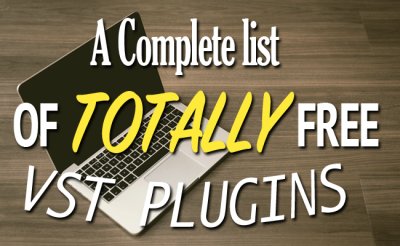101 Inspirational Music Production Tips and Ideas

You are staring at your blank DAW thinking, “I can’t start another track the same way for the millionth time. I need to change things up”; You feel your track is missing the secret ingredient that makes it special; Your inspiration ran dry and you want to spark it again. – In these and other scenarios where you are lacking inspiration, as well as in the pursuit of becoming a well-rounded music producer in general, it comes in handy to have a list of inspirational music production tips and ideas. In the following you will find such a list, full of inspirational sparks. This collection of 101 tips and ideas grew over the last 5 years of my music production career and today I would like to share it with you. Come back to it every once in a while out of curiosity or out of necessity when you feel stuck in a production. You could probably spend at least 30 minutes on every point, so lets don’t waste more time and dive right into it.
Music Production Tips and Ideas
-
- When you are almost finished with a track, take a reference track from an artist you admire, import it into your session and listen to the differences between your and his/her song and production
- Start with the climax
- Draw and plan the stereo image of your tracks
- Listen to interviews of Brian Eno
- Take a short sound sample and loop it to get a nice rhythmical texture. For example, Loop a snippet of a recording of ocean waves and loop it every 1/8 note
- Transform a big band recording to MIDI and play around with it using a MIDI controler
- Study the basics of counter point to crank up your melody and chord progression skills
- Take an existing percussion loop, add it to your beat but slice out some blocks of 8th or 16th
- What is the essence of your track? Get rid of everything else
- Speed it up, slow it down, double-tempo, half-tempo

- Stop for a minute and listen to music you would normally not listen to
- Reverse it, add reverb, consolidate and reverse it again
- Google polyrhythmic
- Take two separate song ideas that you never finished and put them together
- Send your vocals to a reverb bus, put a compressor on the reverb bus, sidechain the compressor with the original vocals (or use an enhancer instead of the compressor)
- Pan an instrument to one side, make a copy and pan the copy to the other side, delay the copy for 5-25ms
- Close your eyes
- RTFM (read the fucking manual)
- Layer instruments to get richer sounds
- Draw and plan the tension curve of your tracks

- Reverse melodies or flip them horizontally
- Create a chain reaction using synths and effects
- Add side chain compression creatively
- Research John Cage and be inspired
- See silence as an instrument
- Shift 1 instrument or percussion loop couple of beats to the right or left
- If something sounds to harsh, add a slight chorus
- Look around, take two objects, bang them together and record it. Voila, that’s your new snare sound
- Take a nap
- Make the dishes and play your track in the background. Don’t listen to it too consciously. What disturbs you?

- Send a synthesizer through a guitar amp or, if not available, use Guitar Rig simulate it
- Think about which of your instruments are responsible for the following roles: Melody, harmony, and rhythm
- Put a subtle ping-pong delay on your hihat
- Watch the documentary “Sound City“
- Sample parts of film music you love. Horn or string sections normally work well
- If you work with a rhythmic guitar riff, cut out everything in between the notes to make it sound super clean and tight
- Always start with high quality samples
- EQ your reverb
- Use 3 kicks to create a new one; 1 for the low, 1 for he mid and 1 for the high frequencies
- Always save up the samples you created in your production: Use them in new productions

- Less is more
- Frequencies lower than 100 shouldn’t be panned because our ear can’t hear direction in the low
- Be open to happy accidents
- When creating you are either divergent (expanding, creating new ideas, open) or convergent (narrowing down, working on the details, goal oriented). Identify which state you are in and don’t jump between them too quickly
- Take an element from another genre or field and use it in your production
- Learn about parallel, bus and side-chain compression
- The essence of music can be described as tension – relaxation
- Try to emulate the sound you are looking for using your mouth
- Take a walk in nature
- Tune your drums to match the key of your song

- Layer Snares, shift them slightly and/or pan some of them
- To keep your mixes clean use 2-3 reverbs and delays only. Put the effects on an aux channel and send instruments to them
- Download some presets for your synth plugins
- Put effects on your master channel like DJ’s do and play around with them
- Keep it simple
- Plan your track ahead on paper (or mind map)
- Study traditional music forms like fugue, sonata form, rondo, canon etc.
- What are you always doing? Change it up and break the rules!
- The Groove of your track is often defined by the hihat
- Trust your taste

- EQ and compression are overrated
- If you lack inspiration take a visual piece of art and let it inspire you
- Keep it fun and don’t take yourself to serious
- Study how tempo influences feeling
- Put a gate plugin on a rhythmical instrument (like a guitar) and play around with the threshold
- Use your wah-wah paddle on a synth
- Listen to your music through the ears of a fan
- Everything is a remix
- Allow yourself to create crappy music
- What is the unique selling point of your track?

- Don’t think you can do everything on your own. Collaborate!
- One thing at a time
- Load, Fire, Aim!
- Automate your master fader slightly. For example add .5 dB at the beginning of your chorus or drop
- Develop a vocabulary for frequencies
- Think about how the Digital Audio Workstation influences your creative process
- Add filtered white noise to your snare sound
- Create a mood, not a genre
- Let the lyrics guide your composition and sound
- Play with expectations

- Use a controller like the Akai APC40 and perform your track live for inspiration
- Use lots of automation, even when you don’t produce EDM
- Listen to your track while you are in a different room than your speakers are
- If you want to produce a hit song, produce for the ladies
- Always start with subtractive EQ
- Ask yourself what the purpose of your song is
- Use a multiband compressor as EQ
- Study psychoacoustics
- Reverse the first word of your vocal track, add reverb, bounce in place and reverse again
- Use shuffle rhythm in EDM music like this guy

- Make music tuned in A=432 Hz because love
- Don’t be afraid to be bold!
- Find out what the purpose of the loudness button on your old stereo system was
- As a modern music producer you are a sound designer as well! Therefore, study sound design masters like Ben Burtt. Check out this short documentary
- More often than not change parameters in the mix rather than solo
- Check out my article on how to describe music
- When you quantize time, automate volume to add human feel and variation
- Delay your kick slightly to get a really laid-back and lazy groove
- Don’t get stuck in the loop
- If you lack inspiration take a loop from a song you like, add melodies and layers and eventually delete the loop
- Keep on pushing, keep on moving and never give up! Promise it to yourself!








[…] “Good engineering comes with time. Meaningful composition should come first.” – […]
[…] “Good engineering comes with time. Meaningful composition should come first.” – […]
spire presets for music production !
thanks for the information
thanks for sharing this tips
Thanks for sharing these cool tips! These are really helpful tips & I think writing lyrics before composing music can also be helpful. It can help to set a tone and feeling for a beat.